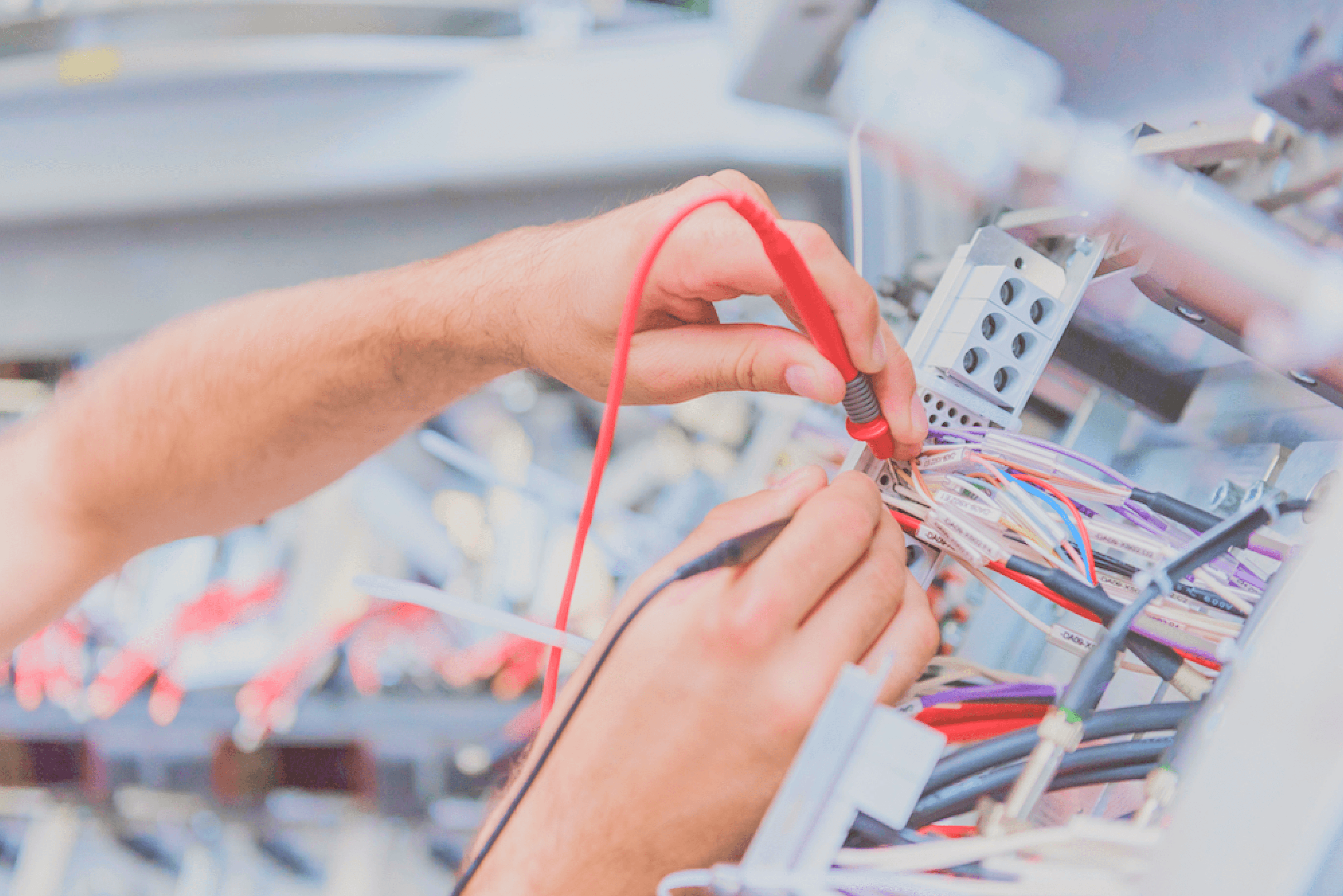

Help electricians who want to sort out their career plateau :
Understanding the underlying principles more quickly
Gain experience in repairing
Four-member Teamwork, Commision
June-August, 2022
My Job: Research + Interview + UX Design + APP UI + Iteration
power bank
background
Increasing demands
Increasing average age
Revenue of electricians in China, 2021
Insufficient young electricians

>40

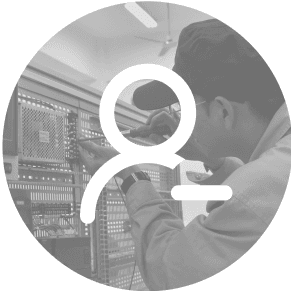
The number of electrician occupations is inversely proportional to their earnings.
General electrician careers have a high upside.
Electrician is a highly technical job, which not only depends on experience, but also requires knowledge accumulation.
apprentice electrician
¥3,000-5,000
¥4,500-6,000
¥5,000-8,000
¥6,000-9,000
¥6,500-10,500
¥8,000-10,000
¥8,000-12,000
>¥20,000
maintenance electrician
factory repair/maintenance
decoration/assembly electrician
outdoor electrician
power distribution
manufacturer after sales
electrical technician, senior engnieer
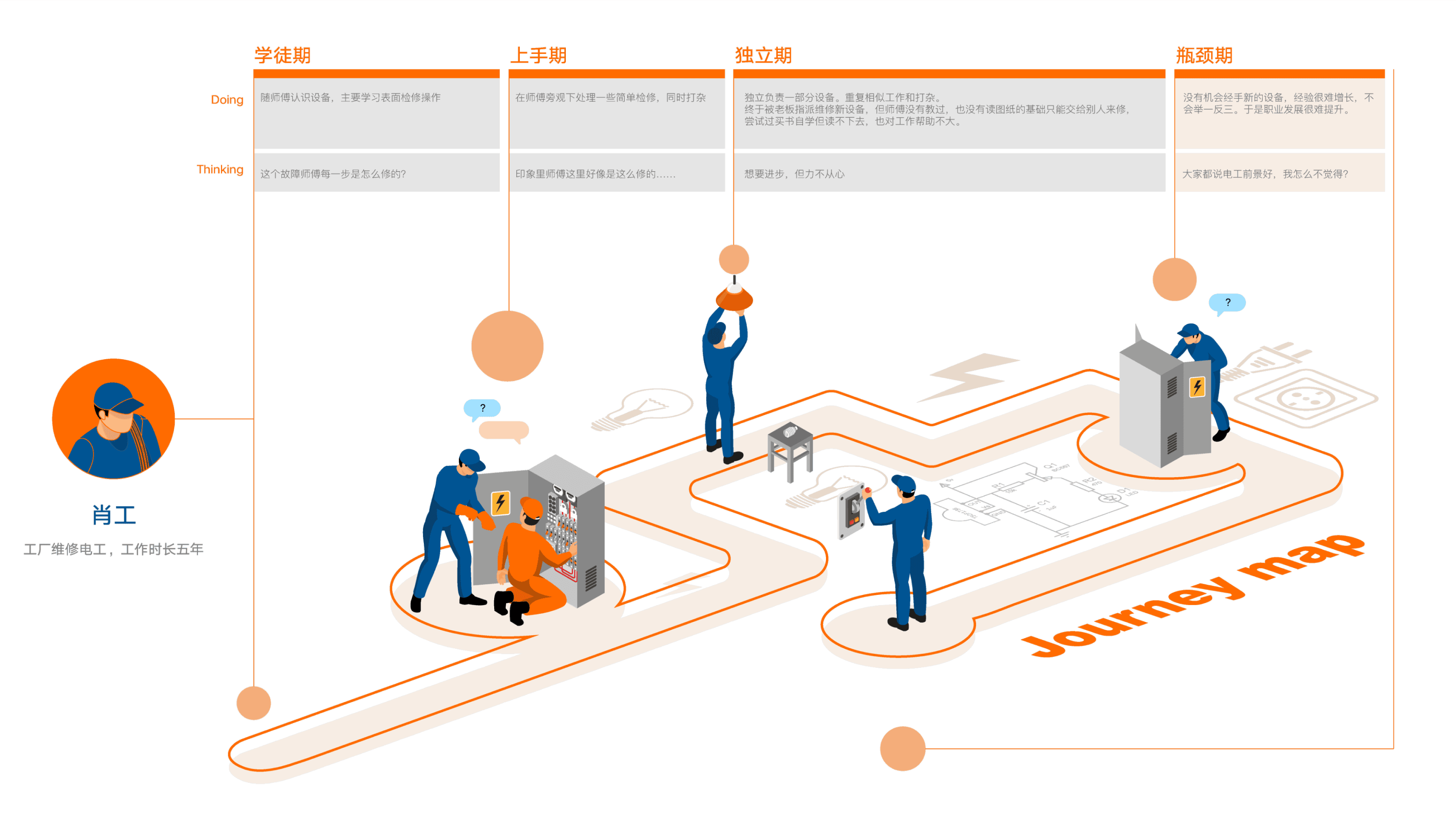
journey map
Rookie
Doing
thinking
Apprentice
Independence
Bottleneck
Joey
Follow the master to recognize the equipment, learn overhaul operation
Handle some simple overhaul under the master's observation
- Repeat similar work and odd jobs
- Couldn't learn to repair new equipments
- Tried to buy books to learn but couldn't read it
Without the opportunity to handle new equipment, it is difficult to grow in experience so and advance in your career.
How did the master repair this fault in each step?
I remember that the master seems to repair like this ...
Tried to get better, but couldn't.
Everyone says electricians have a good future, why don't I think so?
How might We......
Practical Operation
engineering drawings
Physical principles
Current status
knowledge
horizon
Help electricians who want to break out of their career bottlenecks
Gain experience in repairing
Understanding the underlying principles more quickly
Scenarios
After work
How the system works
Understand circuit principles at work
Assist in completing the work
Connect electrician work and life scenes in series
Jointly assist the improvement of professional knowledge
and skills to break through career bottlenecks
Gather experience out of work
Learn circuit principles from practice
Train for weaknesses
Case resource
Record repair processes and
upload them to database
(Most electricians)
(Enterprising electricians)
Improve performance
Work
AR Glasses
Facilities
After work
mobile phone app
Information architecture
Induction Training
Remote Aid
#1- working scenario
Intelligent Glasses
Electrician
Factory machine
loT Cloud database
*Database with digital models and circuit diagrams of plant machinery and equipment
Prompt Area
Workspace
Interface
system in factory

rendering
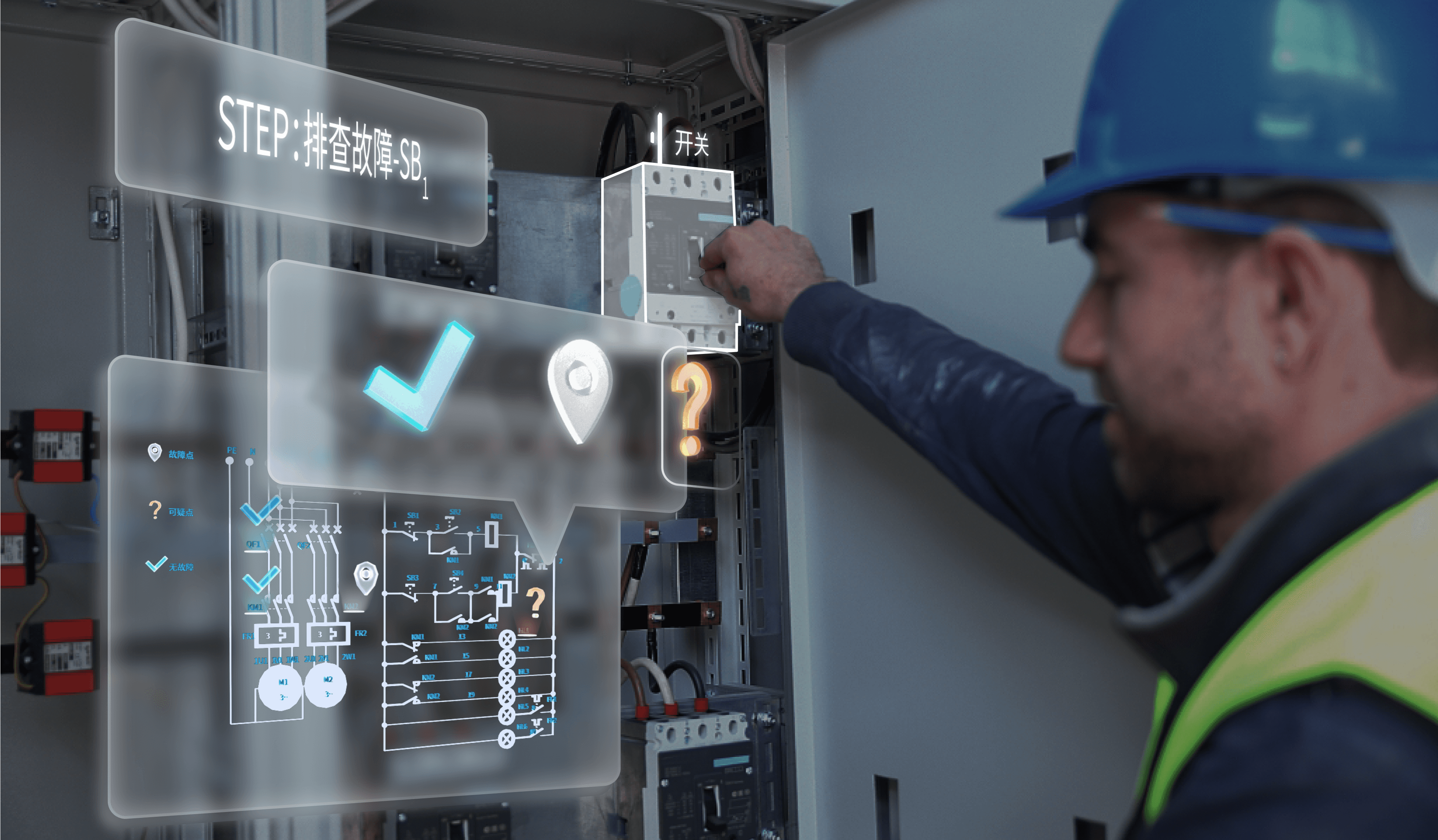
two modes
Default prompt area
Default workspace
Learning mode
Repairing mode
Switching mode: voice input
Switching mode: gesture recognition
Marking the progress of troubleshooting
Schematic/wiring diagram
Indicates the impact of the operation
Marking the progress of troubleshooting
Schematic/Wiring Diagram
Marking the progress of investigation
Indicates the impact of the operation
Operation Object
Operation contents
Component symbols and names
Schematic/Wiring Diagram
Symbols and names of corresponding components
object
content
Can be connected for teaching
Cannot be removed
Free Adjustment
Sync with master shifu
Functional Module
Thumbnails
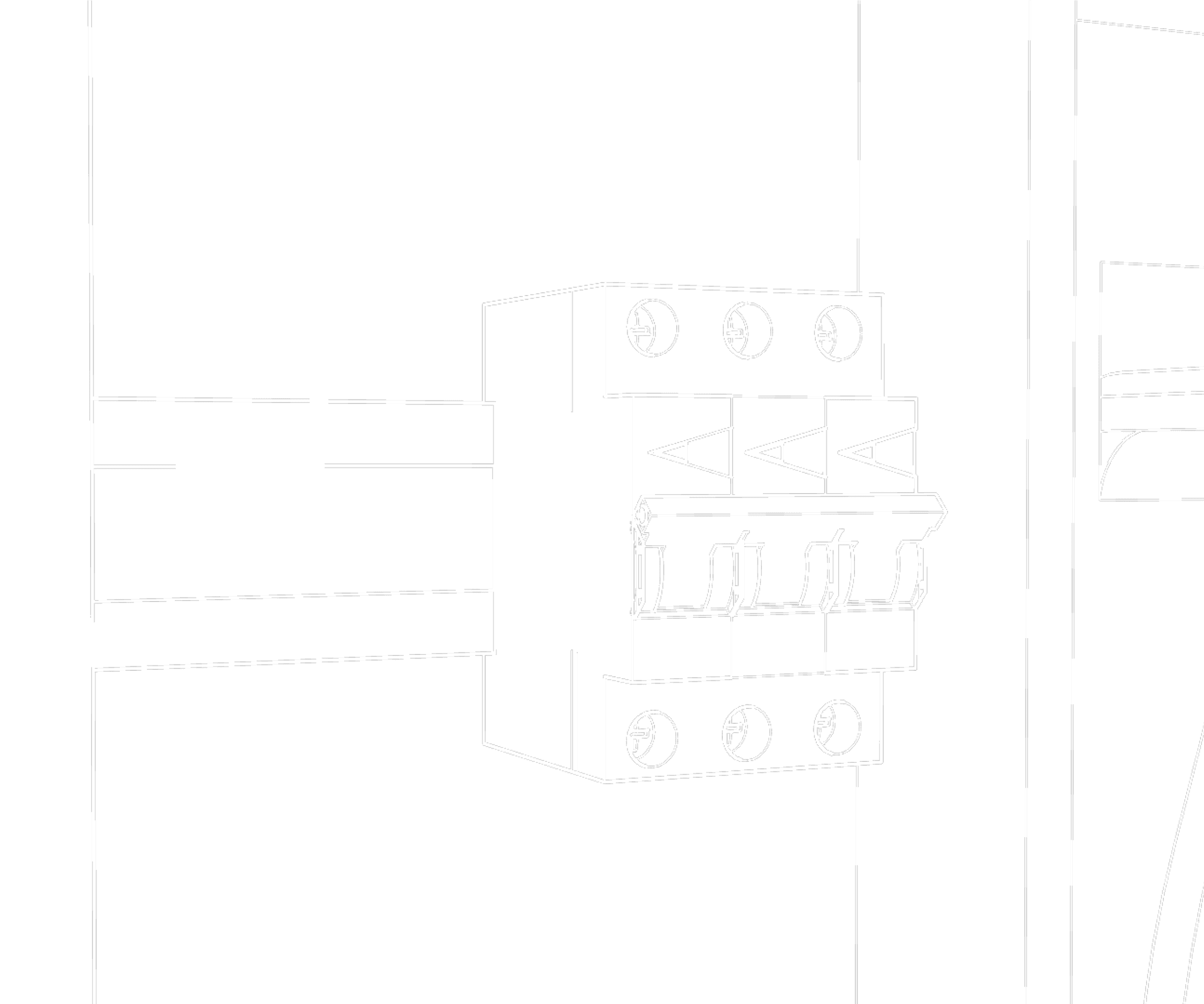


Electrician’s hand



Operation object
Operation content
visualization content based on operational piggybacking
Module 1 - Default workspace
Corresponding component symbols and names
Marking troubleshooting progress
(Minesweeper Layer)
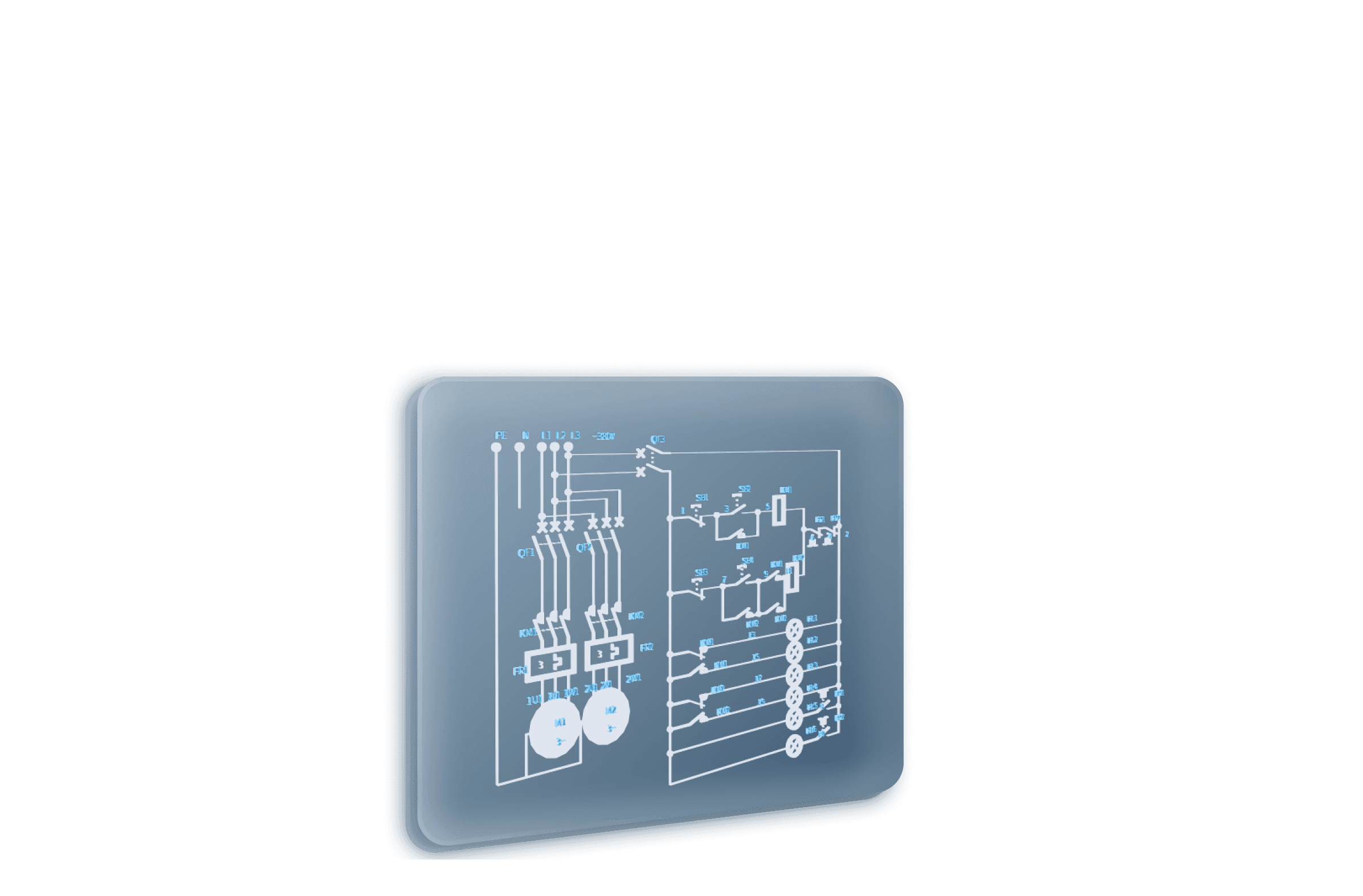
Module 2 - Default prompt area
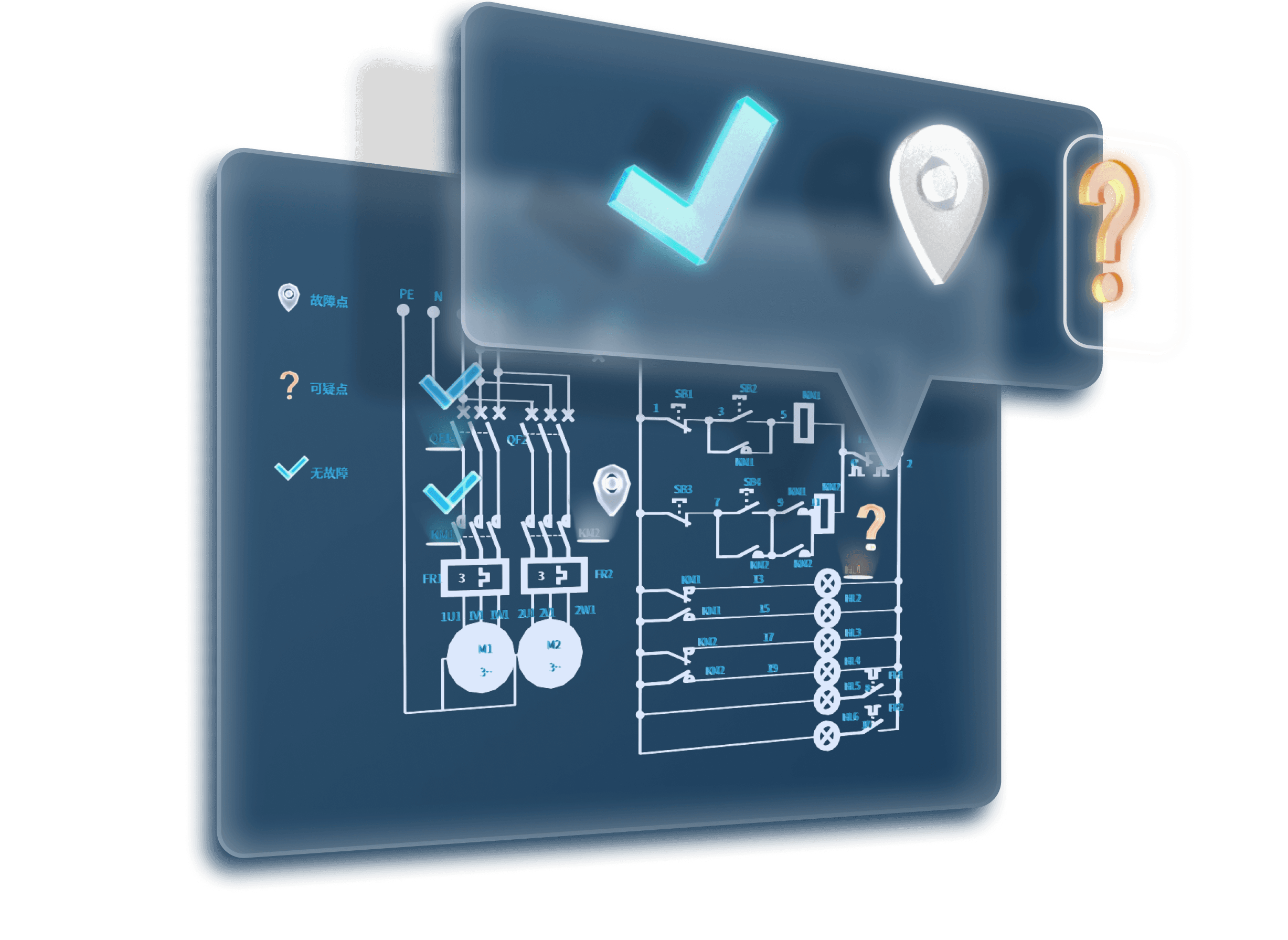
Thumbnails
Module 2 - Default prompt area
Mark the progress of the troubleshooting
Schematic/Wiring Diagram
Operation effect on circuit / marking troubleshooting progress
Point out the influence of operation on circuit
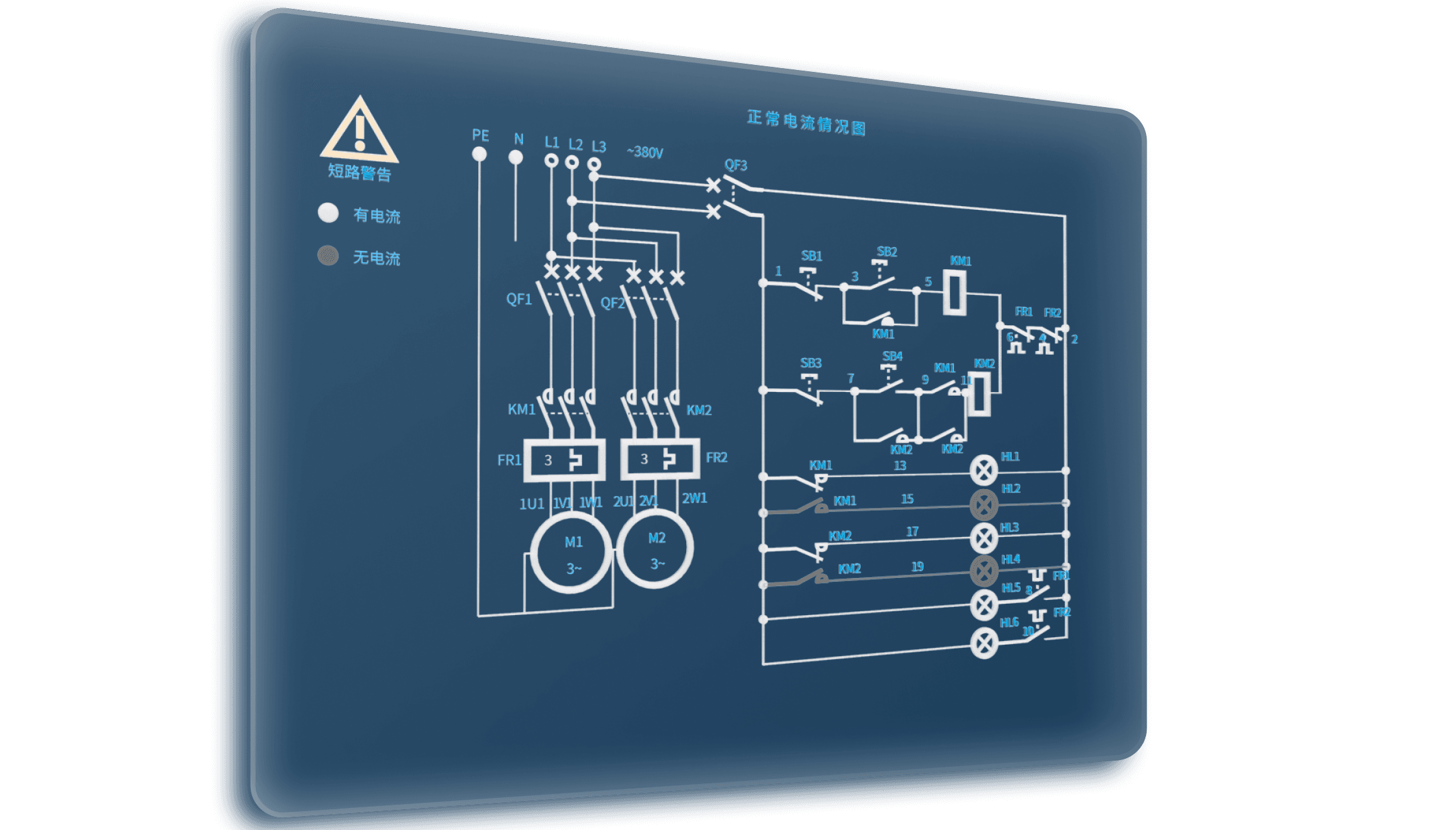
Core Functions
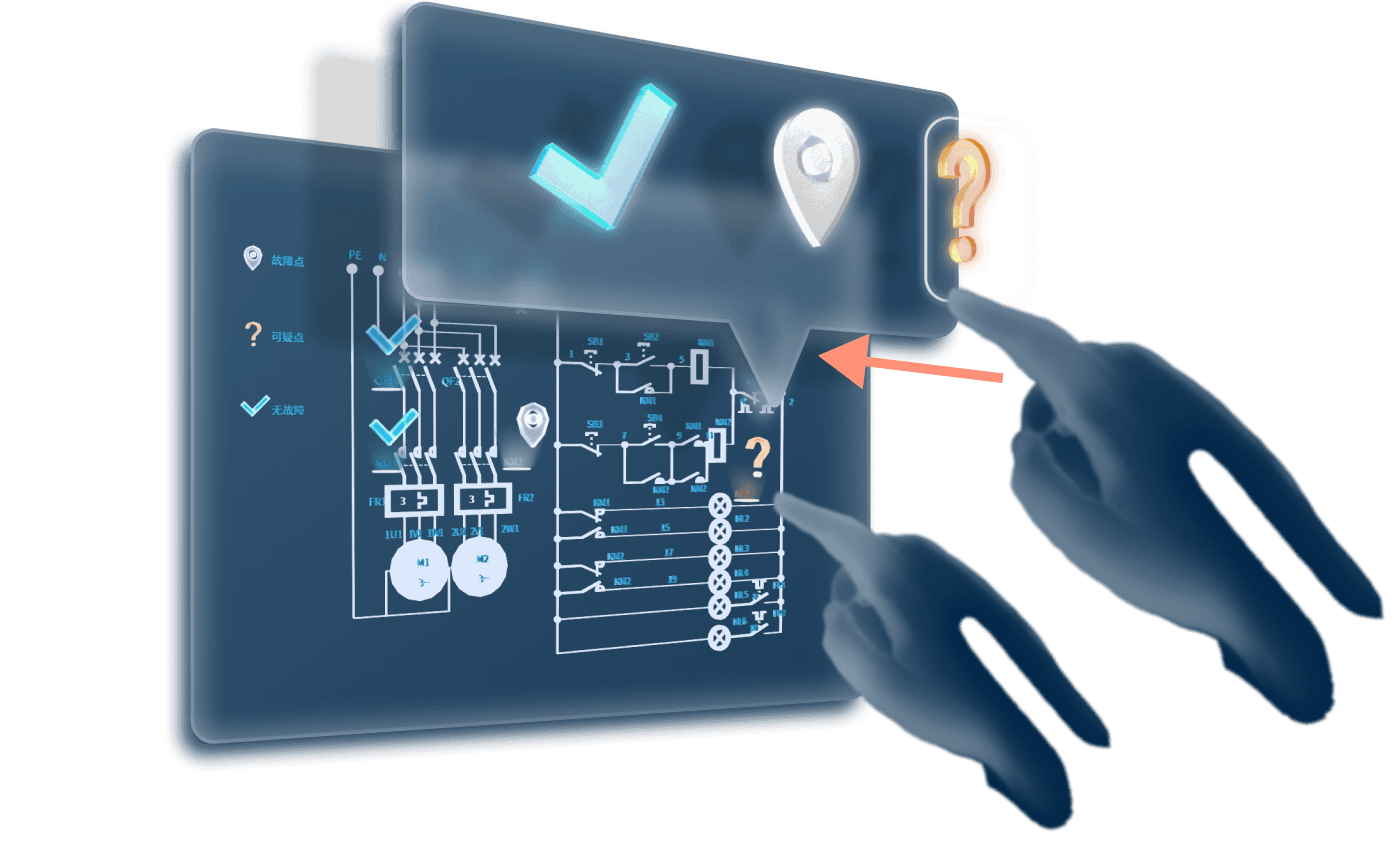
Drag and drop to the lower left corner of the main workspace/field of view
Step4. Click the popup window
Step1. Zoom in on the tip area
Zoom in/out of the cue zone
Switch Workspace Functions


Push up on the prompt area
Switching cue zone content

Step2.Click on the component name
Step3.Drag and drop the selection box
Mark the checking progress
Voice control:
"Open/Close Component Symbol" "Open/Close Scheduling Progress"
Other details
Select Mode
Scan the nameplate
Step1. Click to confirm successful repair
"The fault manifests as ....."
Step2.Dictate additional fault description
Verbalization
"The cause of the problem is ....."
"Repair content is ....."
Step3. Supplement the repair process according to the wiring diagram
Fill out and submit a trouble report
Step1. Click the button to select the mode
Step2. Press the side button to connect with others
Step3. Confirm
Step2. If invited, select whether to pass or not
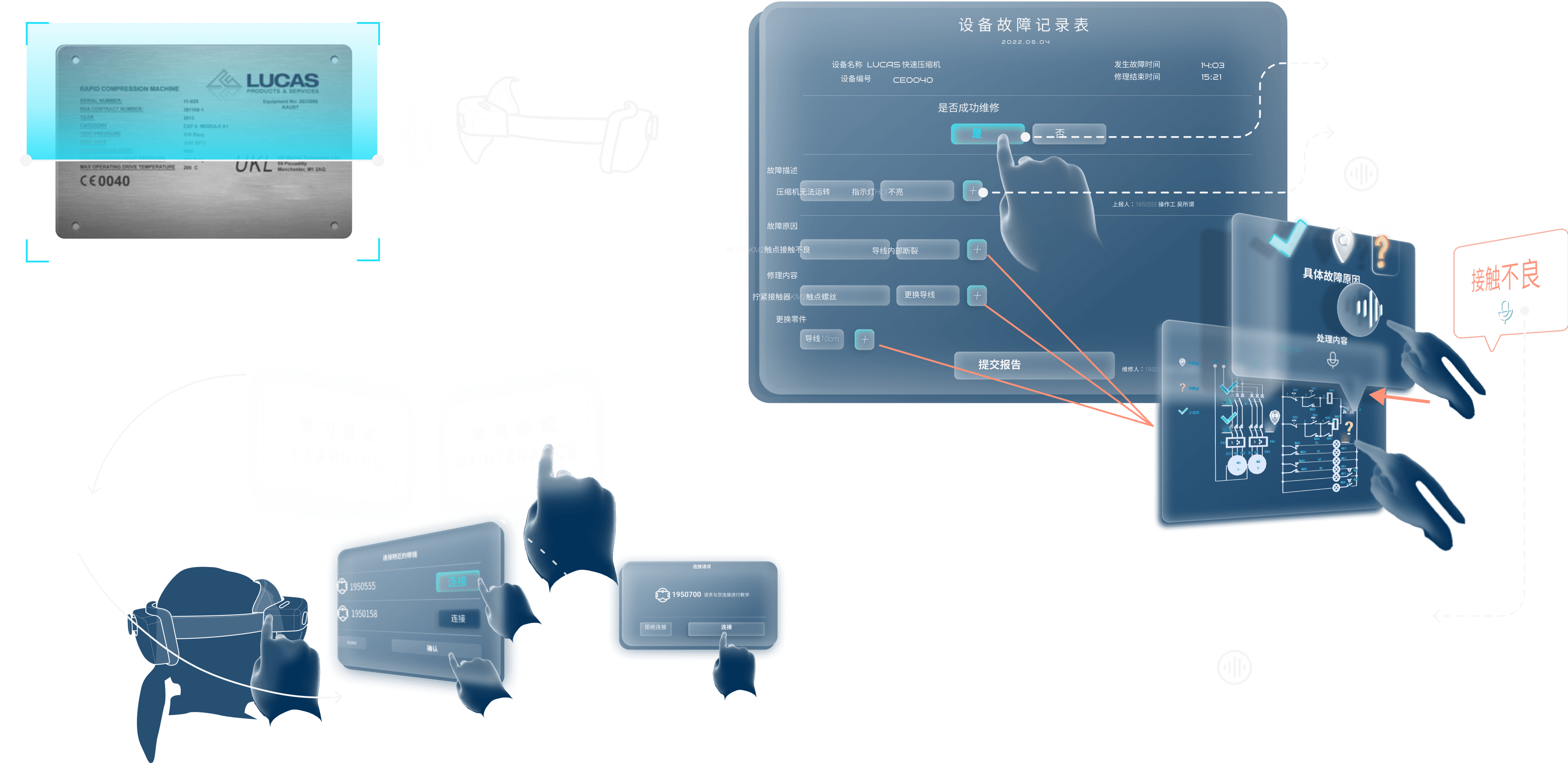
Clik
Service workflow
Using Process
Phase
Wear glasses
Interaction Method
Backstage
Scan the machine nameplate
Visualization
Confirm the model number
Press the side button
Click
Press side button to initiate
Select mode
Repair Mode
Study Mode
free repair
free study
Receive Connection request
Initiate connection
Confirm Eyeglass number
Confirm Eyeglass number
Load corresponding machine model and corresponding circuit diagram in database
Log in
Interconnection
Sharing of real-time machine information
Repair Preparation
Start/watch a repair
Toggle between workspace and hints on demand
Toggle between workspace and hints on demand
Gesture Control
Gesture
Gesture Control
Voice Input
Voice Input
Image recognition of nameplate content
Image recognition of gestures, operating positions and actions
Voice recognition for corrections
Recording of operation positions and actions in chronological order
Circuit simulation based on recognized actions
Fill in/confirm the location of the fault or the results of the current investigation
Fill out the fault report
Fill in/confirm the location of the fault or the results of the current investigation
Confirm and submit the fault report
Confirm and submit the fault report
Recording of filled data
Fill in the form with the fault location marked by the user
Unrepaired faults are sent to other maintenance electricians in the plant
Synchronization of reports with plant systems
Upload the report and procedure log to the Learning App case library
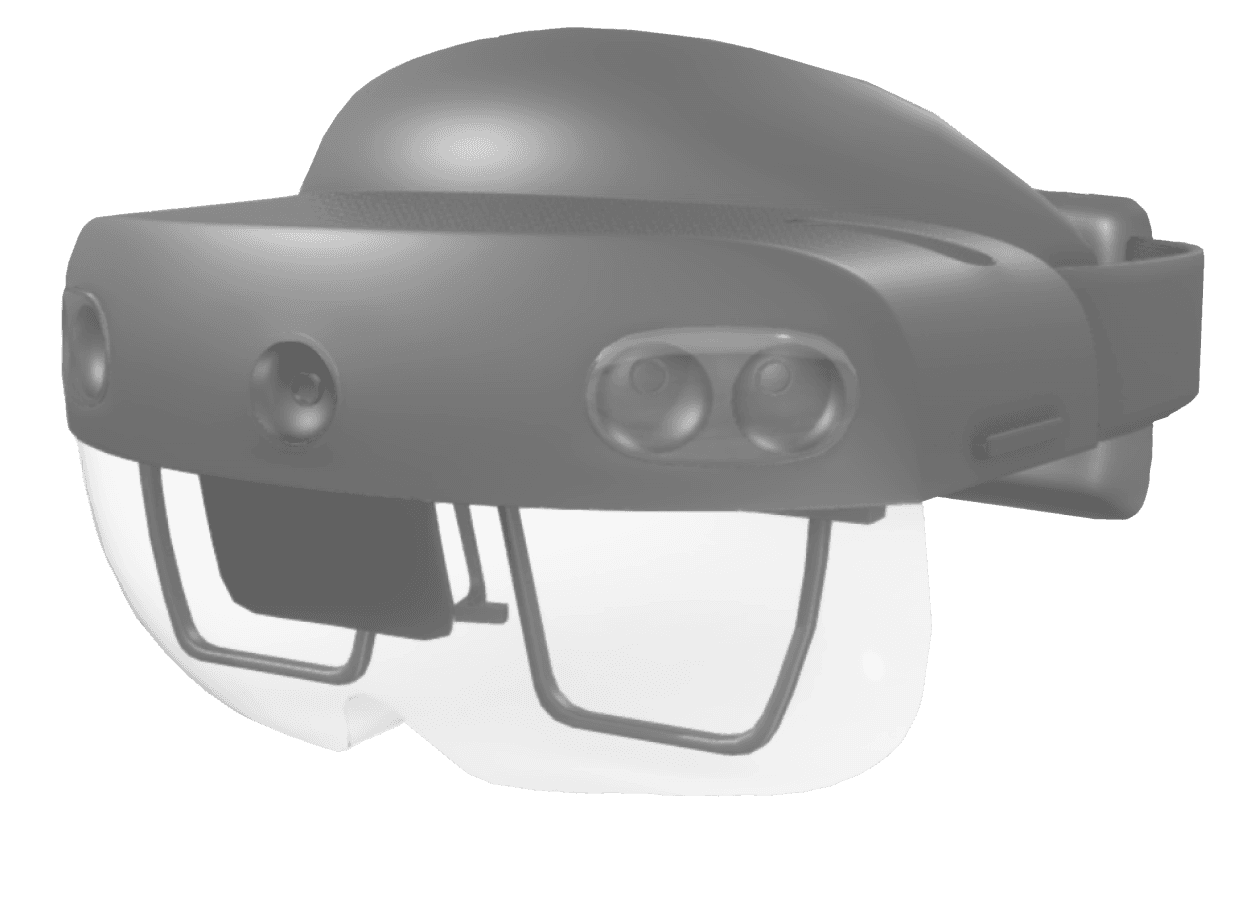
Microsoft HoloLens2
2xIR cameras
——Eye tracking
1xMP sensor
——Depth Learning
——Recording
1xWebcam
1xAccelerometer + Gyroscope + Magnetometer
——Inertial measurement unit
——MR interactive display
——Device-based command and control;
natural language processing
4xVisible cameras
——Head tracking
Waveguide Perspective full range of lenses
Microphone Arrays & Speakers
hand tracking
eye tracking
smart voice
spatial mapping
MR capture
side button
Sensors
Display
Voice
Understanding
Accuracy
Cooperation
Devotion
Technical Support
App Functions


Main functions
Other functions
Fault library
Principle feedback
Remote work
Achievements
Job assessment


Troubleshooting cases in multiple working scenarios from real equipment
Helps electricians understand component symbols and circuit connections
Connect with experts to help solve problems
Documentation of solved equipment faults
Display personal skills radar charts and recommend suitable jobs
#2- After-work training scenario
architecture
work station
personal interface
Two modes
Working Environment
Radar chart
Work Process Release
Repair History
Unsuccessful repairs at work
Unskilled repair
Never seen
May encounter in the future
Weak electricity
Force electricity
Number of repairs (proficiency)
Circuit Principle
Repair width
Repair efficiency (speed)
Time
Characterization
Causes
Failure of the same equipment
Similar Characterization
...
Career Development
Search by category
Simulate real maintenance
Fault report form
Similar topics
Demonstrate the corresponding schematic diagram
Training
Choose Equipment
generate faults
user operations
summarization
success
failed
give up
hints
select faults
Choose Equipment
Demonstration
competence assessment
personal achievements
Demonstration
encourage users to operate
similar recommendations
Continue troubleshooting
Main Page Wireframe
Walkthrough
Failure
Success
Report Form
Similar tasks
Tips
Demonstration


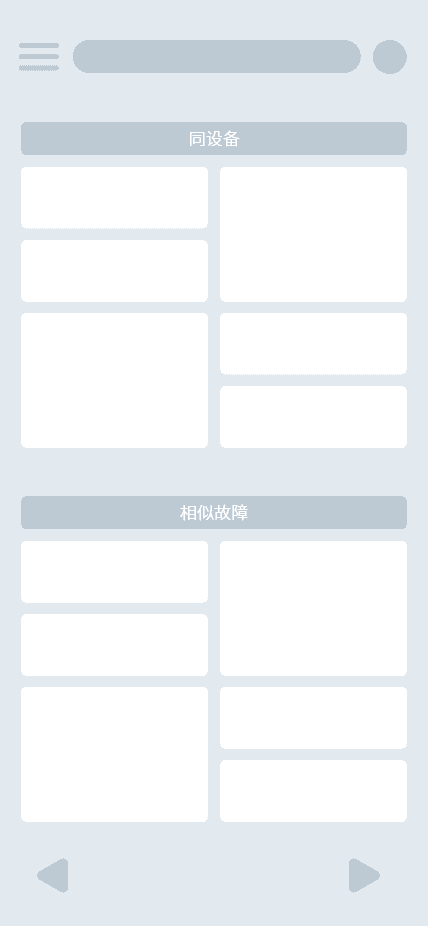

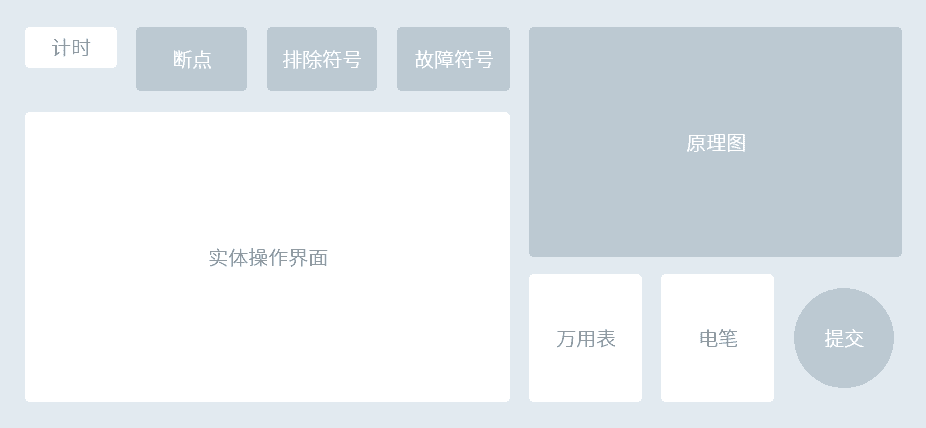


UI



Timer & fault ID
3D circuit Worktop
Testing tool kit
/electricity tester/voltmeter/troubleshooting/marking faults/
/fault judgment time/fault ID/fault name/
/air switches/fuses/relays/circuit breakers/contactors/motors/......
Element information
Testing result
Circuit diagram
Fault appearance
Submit
Report
Fault diagnosis feedback
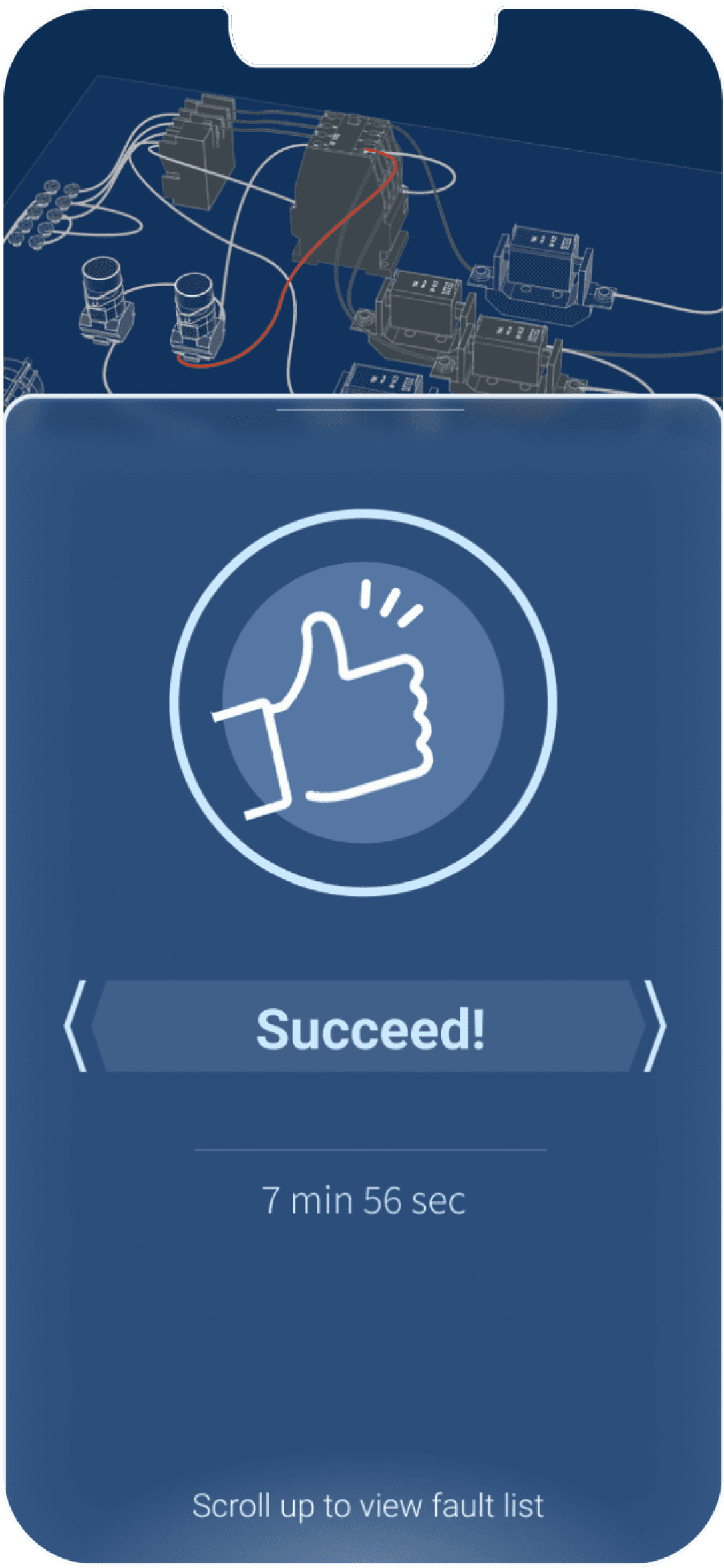
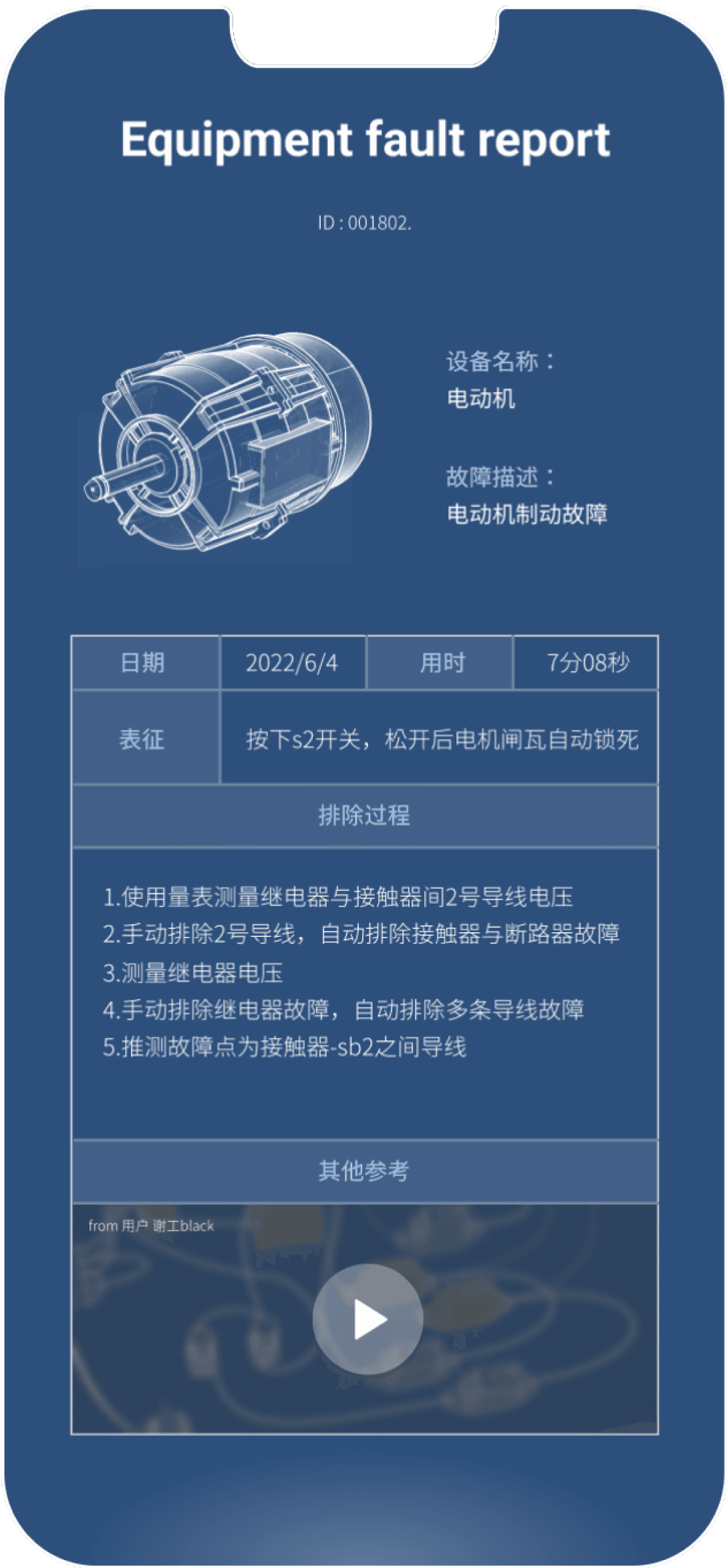
Enter the operation interface
Slide to change view
Operate tools to measure
Marking detected spots
Mark fault points and submit
Wiring diagram components correspond to the schematic diagram
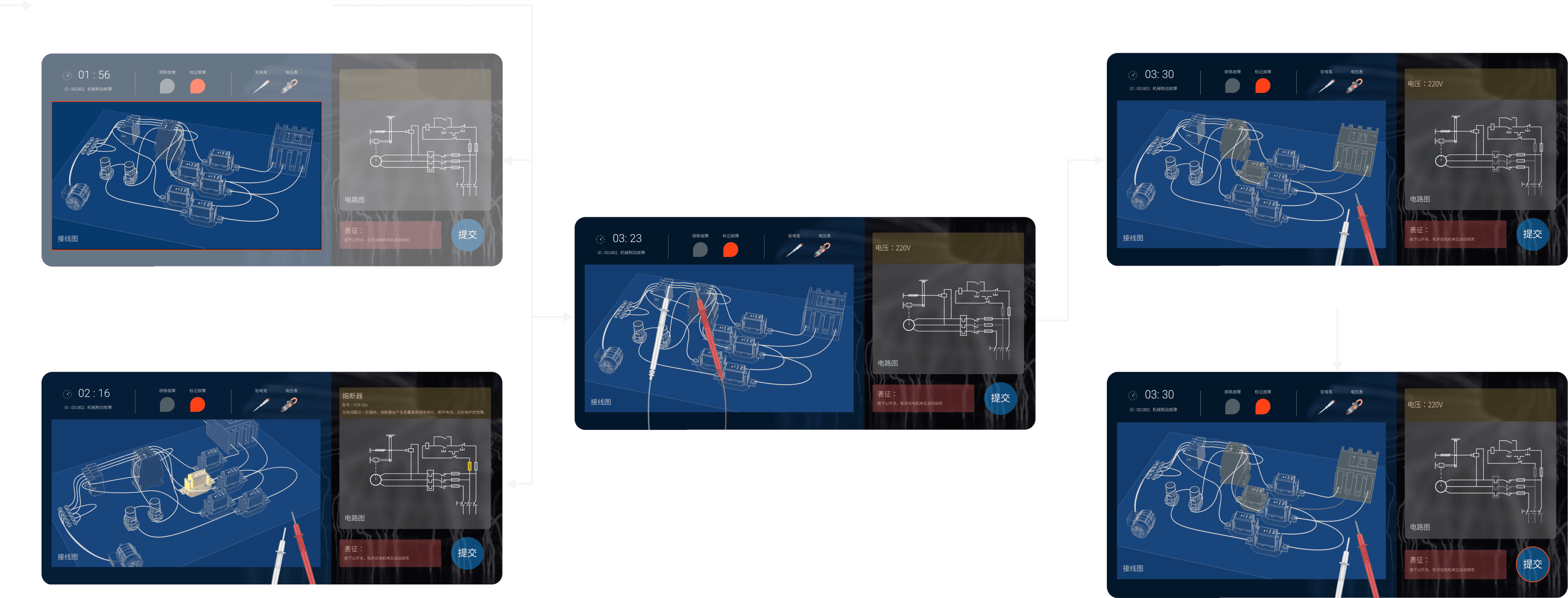
Feedback
Interviewees
Testing contents
Goals
Is it effective, are you willing to invest money, how much are you willing to spend, why, are there competitors?
What are the desired benefits? Are there prerequisites to consider when putting it into use for workers? (e.g., will the worker stay on for a long time, level of worker position, etc.)
Room for program improvement/how to ensure expertise in this knowledge
Boss & Facilities managers
Factory managers
If you use it, what type of failure questions would you like to get? For the target function, what is your operational process?
Is the characterization of what is broken described clearly;
Does the wiring diagram simulate the real situation and where are the gaps? Do the discarded parts have a big impact?
Is the schematic and wiring diagram correspondence clear; does the troubleshooting pattern of exclude-find out make sense;
Does the way it operates now interrupt normal maintenance?
Does the wearing device itself interfere with the work/will the position affect the operation of the device?
Is the interface easy to understand / are there any functions that you find useless / are there functions that you would like to have / can you find these functions
Are the schematic correspondence and fault labeling features helpful?
How do you ensure that this knowledge is specialized?
Users
Positive young electicians
Interaction rationality
Core functional effectiveness
Business model


Is there a willingness to spend time using the software? If so, when exactly do you use it?
Will the software be useful for real work? What other real-world problems would you like to be able to solve by rehearsing them in your spare time?
What are your favorite parts? What parts are redundant or useless?
Spare-time Section
Spare-time Section
Work Section
Work Section
Management Section
Things that I don’t understand.
New ideas to consider.
Things that I liked the most.
Things that could be improved.
Feedback Capture Grid
Things that I don’t understand.
New ideas to consider.
Things that I liked the most.
Things that could be improved.
Feedback Capture Grid
Wire color division and electrical industry code
Little help to a skilled electrician
From Electricians
From Managers
Be useful to new electricians
Convenient practice
Be useful to new electricians
Solve the problem of Shifu’s unwillingness to teach
Solve the problem of Shifu’s unwillingness to teach
Remote collaboration or guidance of repairing
Not cost-effective
Targeted design for a factory
Routine failure of a piece of equipment is the most valuble experience from Shifu
PLC mode
Recommend cases of the equipments in the factory I worked in
Why don’t send these electricians to training institutions
Effectiveness for complex problems and equipment
Little help to a skilled electrician
The quantity of equipments’ models
New ideas to consider.
High-end factories
Low-end factories
AR scenarios Refresh
Learning-Oriented
Work aid, learning by doing
Component symbol display
Component symbol display
Circuit diagram
Circuit diagram
Fault markers
Fault markers
Orientation Phase
Remote Collaboration
History of faults
Annotations / Tips
Steps to operate now
Steps to operate now
Original Scenario
Renewed Functions
Renewed Scenario


AR interaction specifications
Correction of the function obtained by feedback
Interface & Interaction adjustments
Original Scenario
Renewed senario
App ui Refresh
Industrial standard of electrical device
User feedback from interviews
Interface & Interaction adjustments
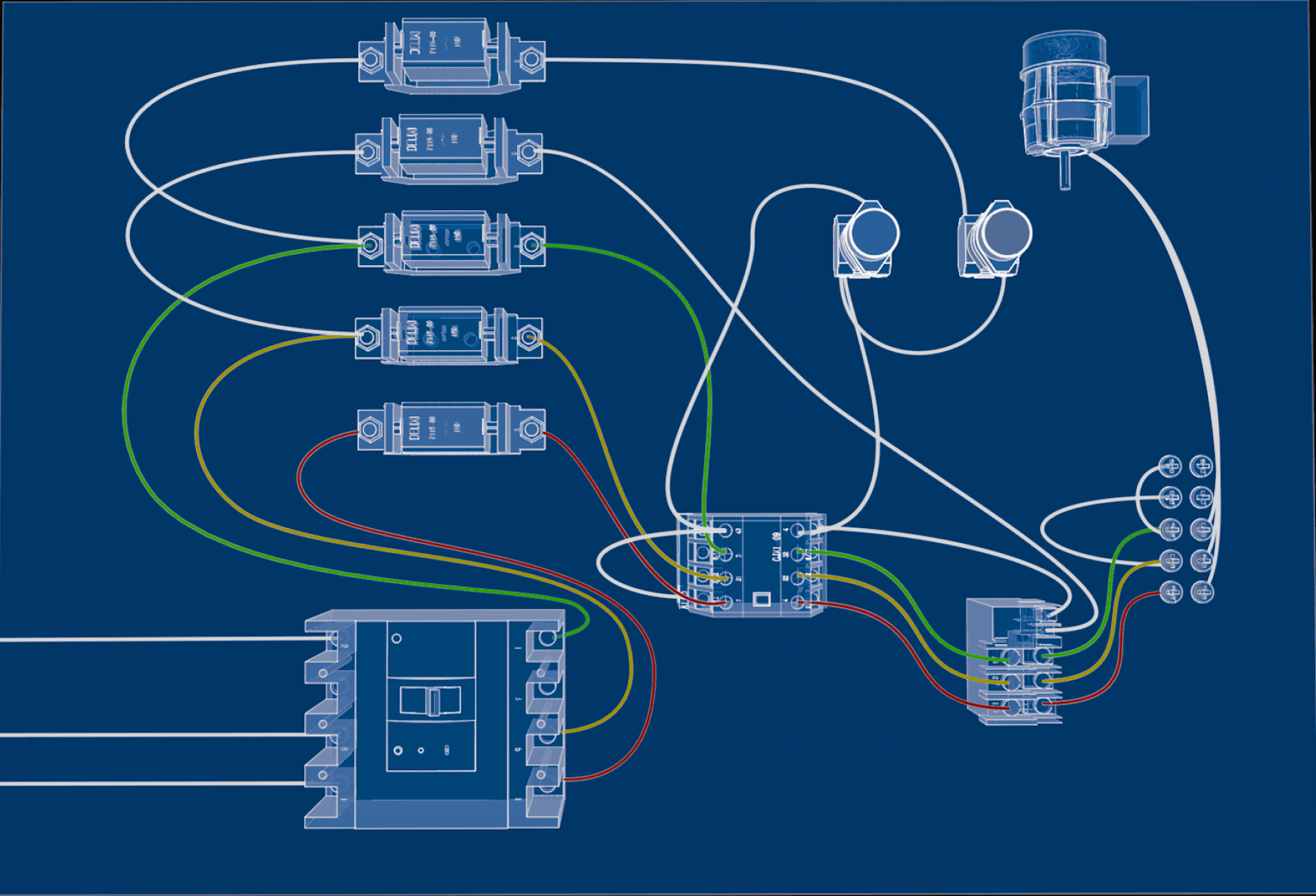

Elements Layout
Wire Color


Information on the left side
Operating points on the right side
Expand the operating area to make it easy to view
Separate the position of detection tool and mark
Enlarge the button

Remote Collaboration
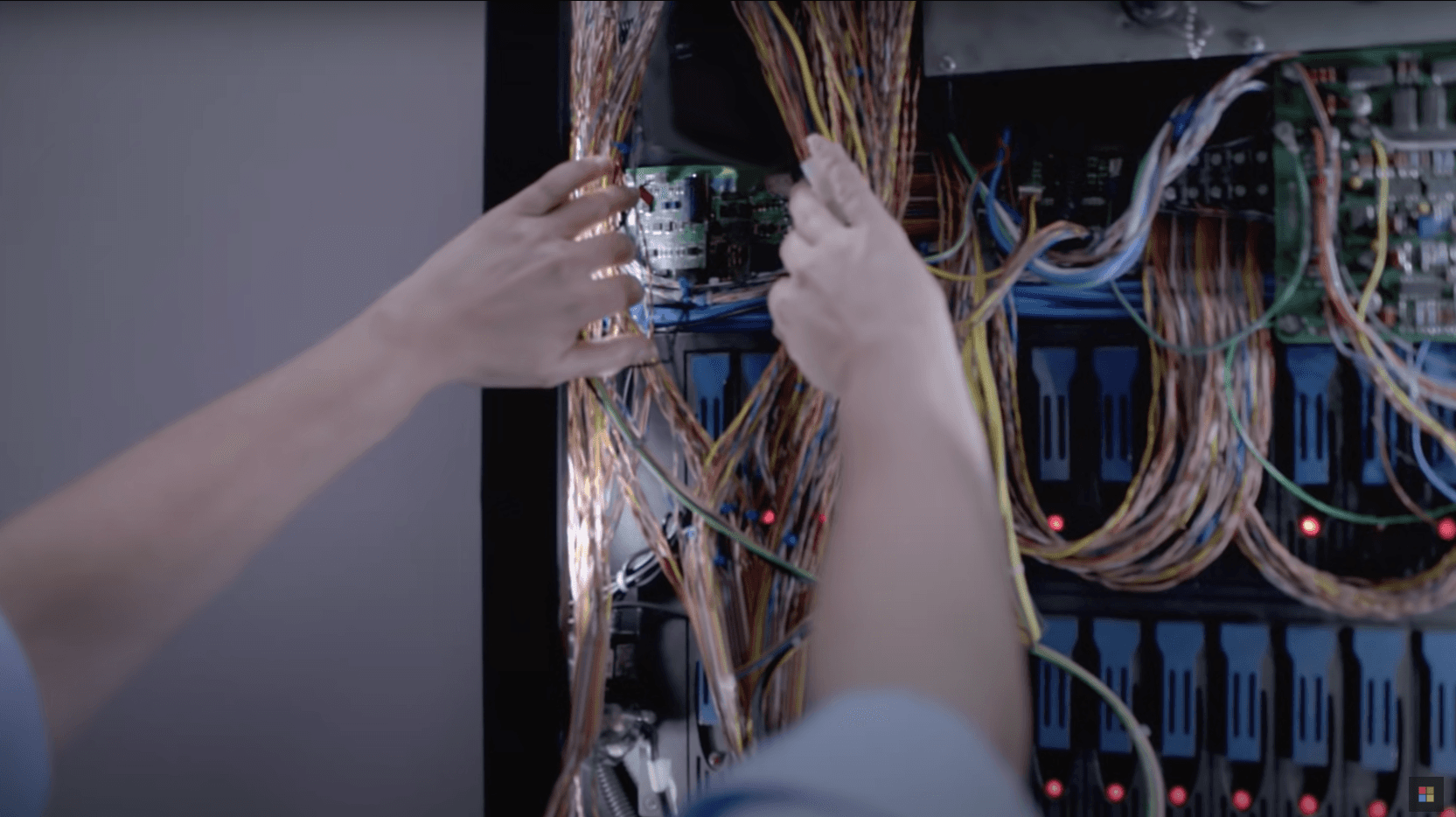


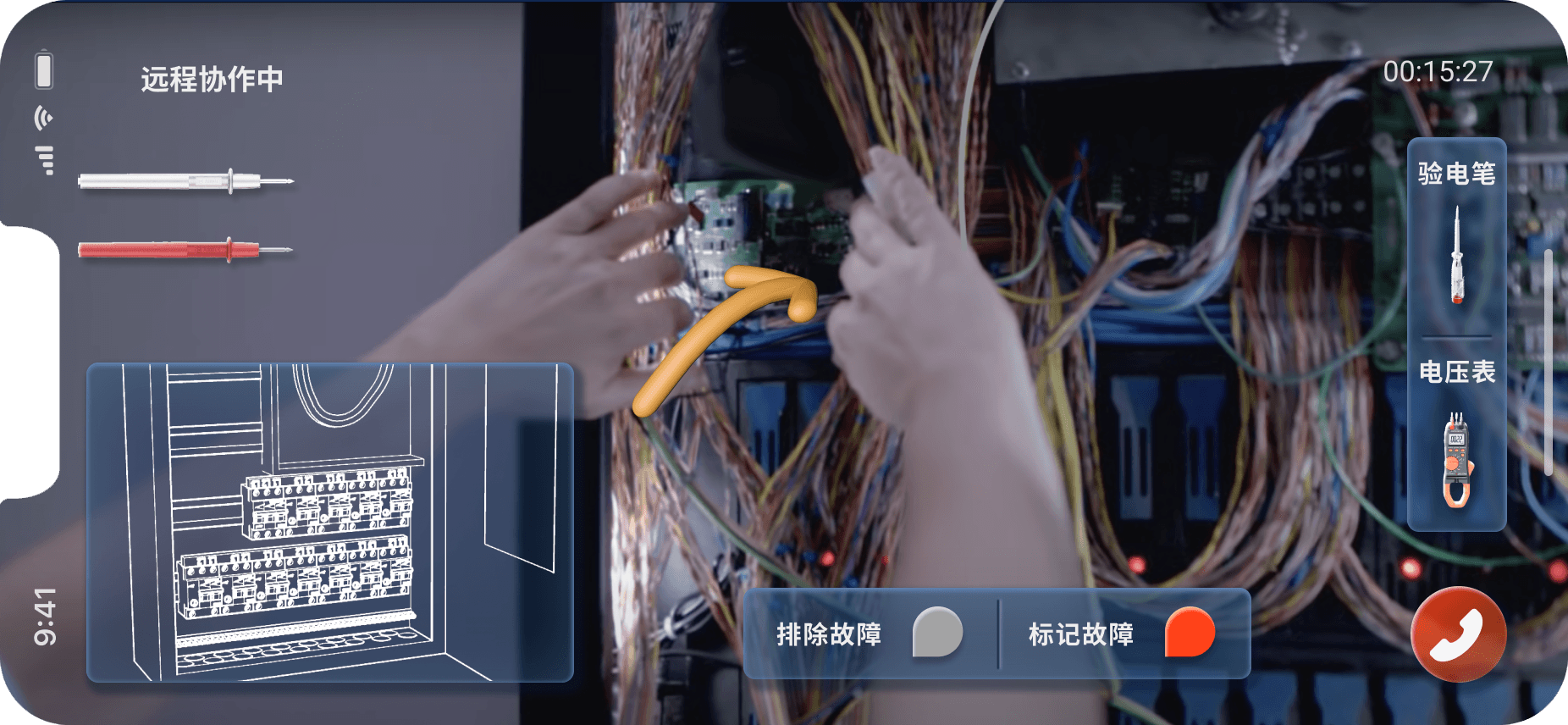
Annotate in reality through the screen
Video call
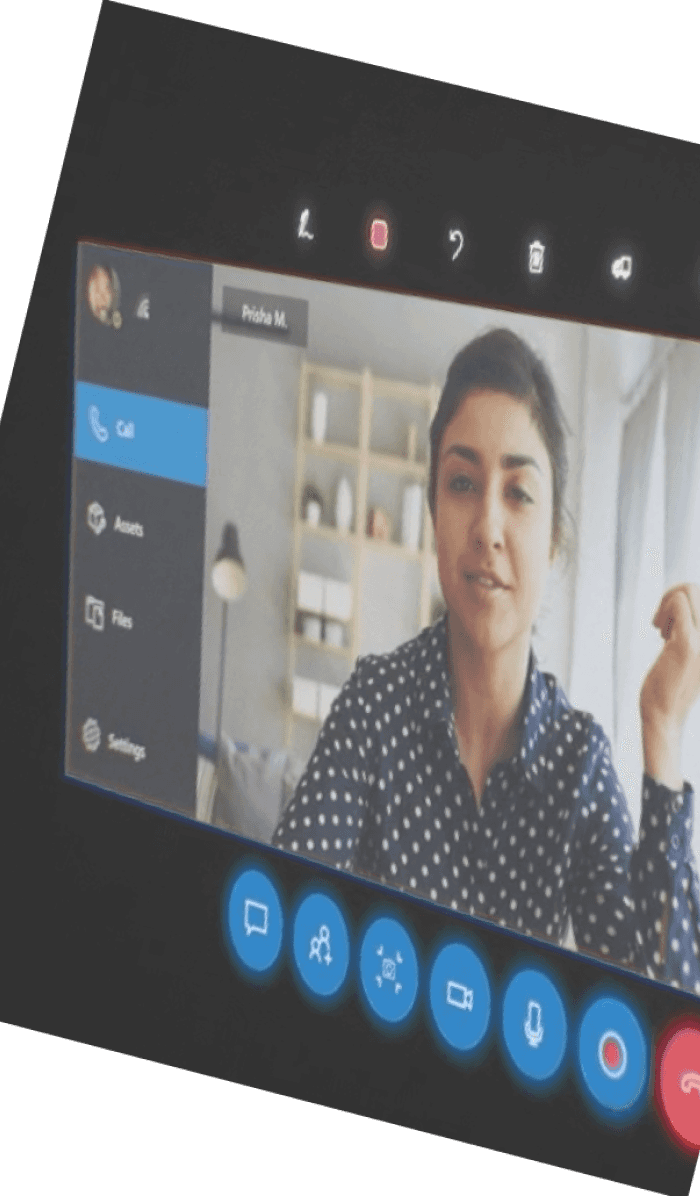
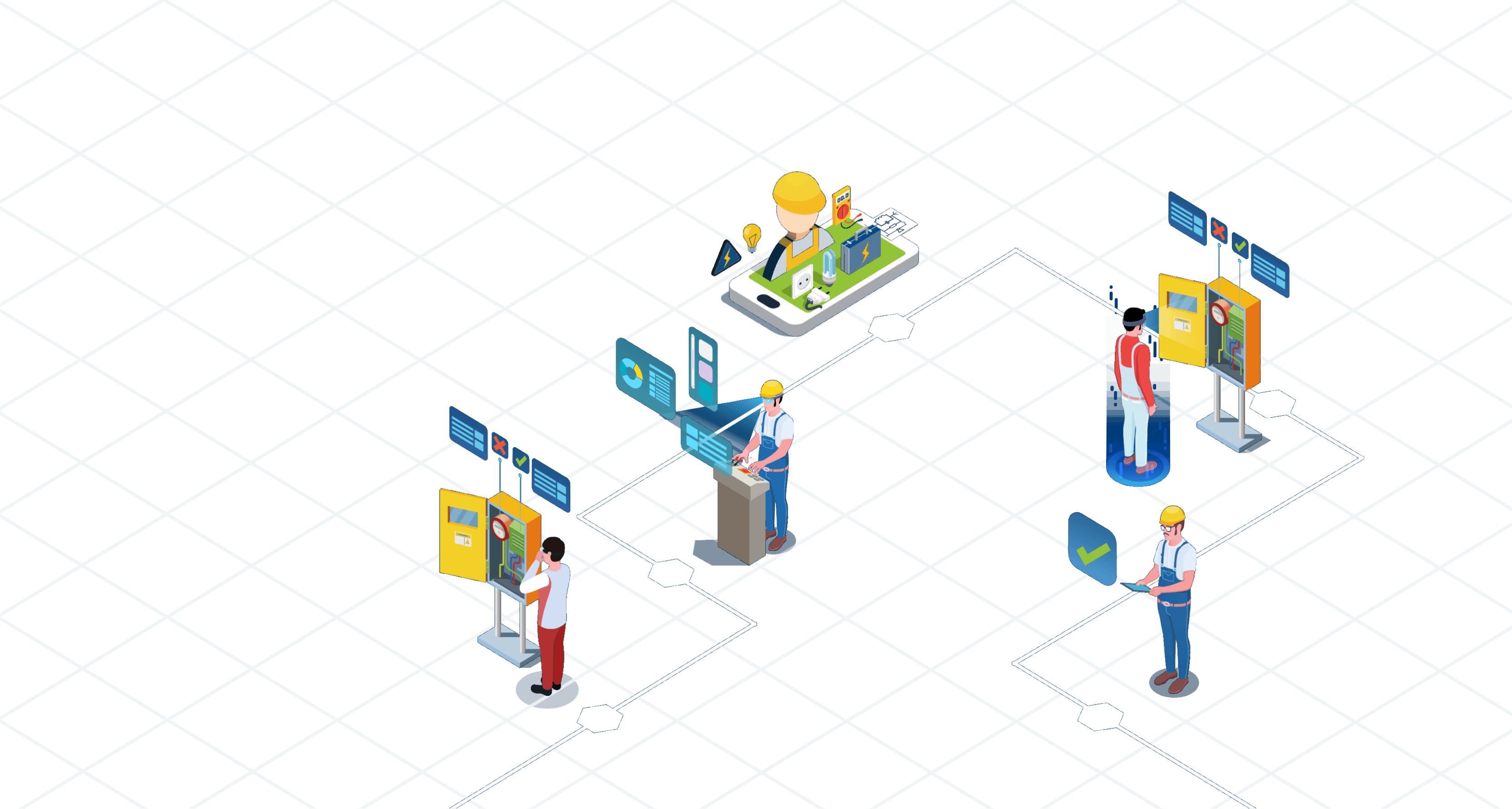
Linked Learning with Master
Independent learning mode
Learning-maintenance mode
APP self-study
APP self-study and consolidation
APP Learning Update Cases
APP Learning Update Cases
Maintenance mode
becoming a specialized/advanced technician

renewed journey map
Rookie
work
after work
Apprentice
Independence
development
stakeholder
The contribution and return of stakeholders
Equipment manufacturers
Provide original database
Buy equipment and data
Repair machines for the factory
Accumulating data errors on equipment for equipment upgrade
Provide faulty equipment requiring repair
Provide HoloLens to workers
Factory owners
Electrician
development
Scenarios
Values
Users
Working
Scenario
Spare-time
Scenario
Orientation Phase
Remote Collaboration
Low-end
Low-end
electricians who
need to progress
especially new workers within 5 years of joining
Remote collaborators
Workers in
other fields
e.g. factories/companies such as Toyota, TSMC, Siemens
Worldwide, High-end
Professional
technician